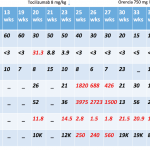As it happened, Dr. Tan became president of the ARA at a momentous time in its history. Returning from an ARA Interim Scientific Meeting in Palm Springs in 1984 [during those days, the ARA had two meetings a year—an annual meeting in the summer and the Interim Scientific Meeting in the winter], Dr. Tan received a hand delivery from the president of the Arthritis Foundation (AF), Cliff Clarke. In Clarke’s handwritten letter, AF officers asked the ARA to cease activities related to advocacy because they would jeopardize the AF’s tax-exempt status. “This would have meant that, if the ARA stayed as a section of the AF, practicing rheumatologists would have to separate from research rheumatologists,” explained Dr. Tan. The ARA leadership wanted to keep the two facets of rheumatology together, and a decision was made to separate from the AF.
“I spent a lot of time trying to figure out how we could negotiate with the AF for a separation that would allow the ARA to get along for the first couple of years until we got on our feet,” recalls Dr. Tan. “I thought the person who could do it best was Bill Kelley [who later also became president of the ARA] and asked him to chair a negotiating committee. And we were finally able to get a nearly unanimous approval of the ARA membership at our annual meeting in 1985.” In his closing address as outgoing ARA President in 1985, Dr. Tan outlined a three-pronged agenda for the future of the organization: to preserve research (by nurturing research fellows and young investigators, and supporting basic research with partiality to clinical research); to promote education; and to participate in public advocacy.5 The ARA, which later renamed itself the ACR, owes its ongoing strength and vibrancy to those who steered it through the separation.
Dr. Tan also served overlapping terms as chair of the AF Advisory Committee on Standardization of Antinuclear Antibodies (1981–1988) and with the International Union of Immunological Societies’ Committee for Standardization of Autoantibodies (1984–1998; 1989–2000). The latter affiliation is where Josef S. Smolen, MD, recalls his first lengthy personal connection with Dr. Tan. “You know, you meet people on different occasions, and some are serendipitous,” says Dr. Smolen, chair of the department of medicine 3 at the Medical University of Vienna in Austria. “Obviously, I knew Dr. Tan first from the literature as one of the premier scientists in the field of autoimmunity and, in particular, autoantibodies.”


